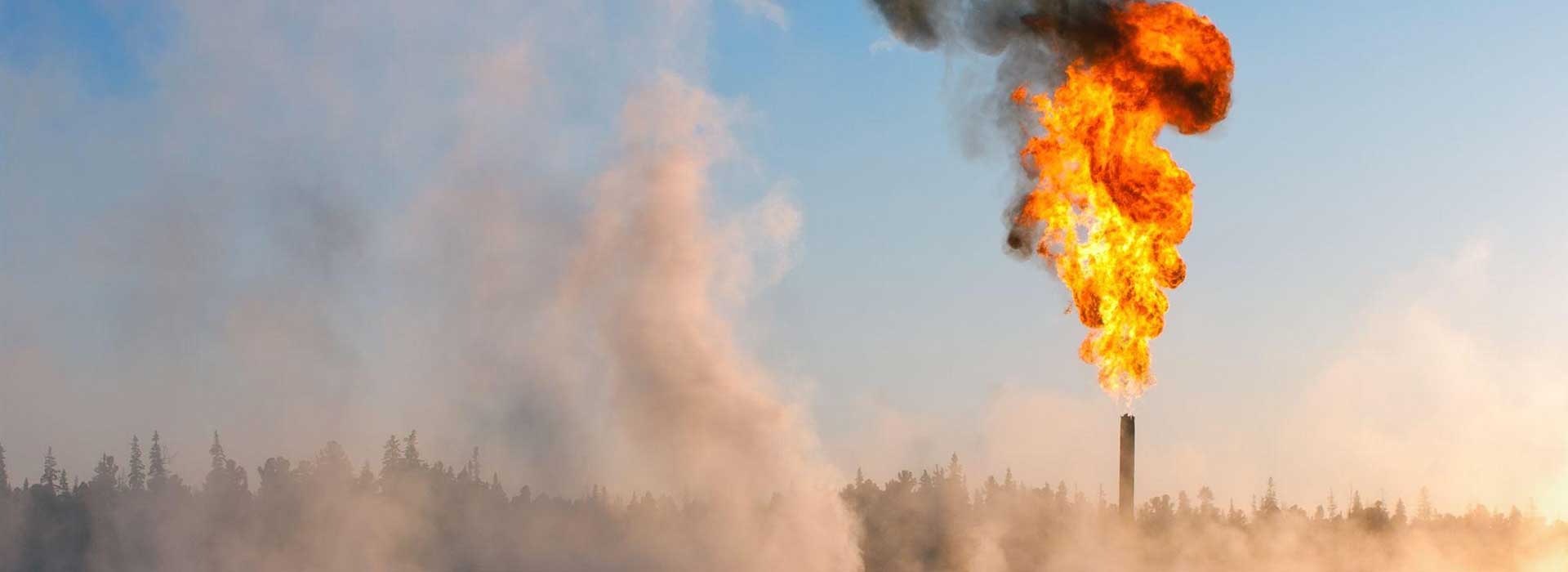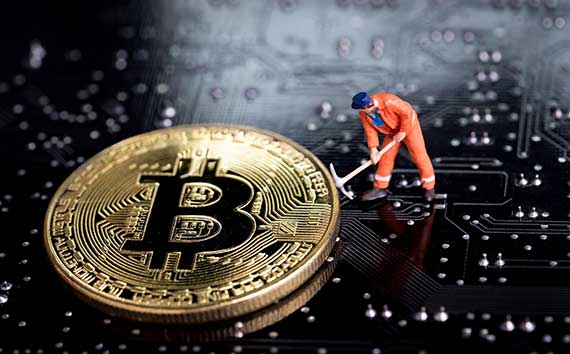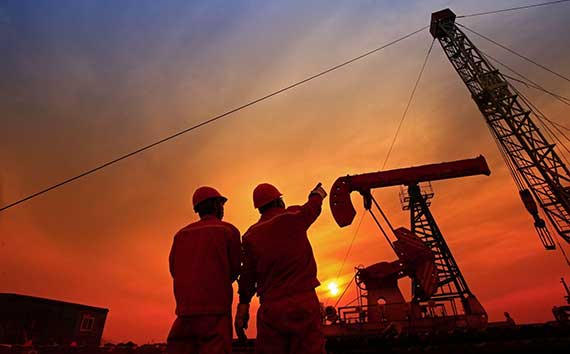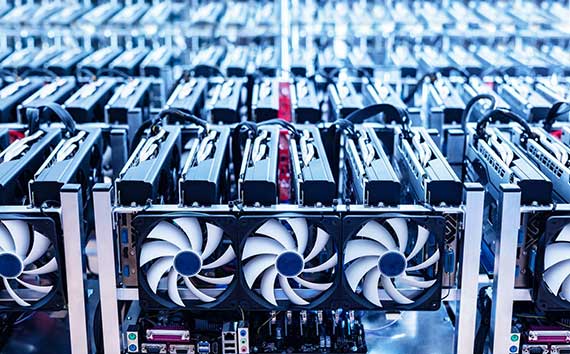The Bitcoin mining industry has paired up with natural gas and oil companies in a new practice called Bitcoin fracking. The process involves recapturing wasted energy from oil and gas drillers and repurposing it to power Bitcoin mining operations.
The result is arguably beneficial for the environment and can lower the carbon emissions from both industries. This is an exciting development in the Bitcoin mining industry and is a small step toward helping cryptocurrencies become more sustainable.
Today, we will explore the industry of Bitcoin mining, including more details on the process of Bitcoin fracking. We will also cover how Bitcoin mining works, meaningful information about the industry, and how you can become a Bitcoin miner.
What Is Bitcoin Mining?
Bitcoin mining is how new Bitcoin (BTC) currency is introduced to the market. With the use of powerful computers, Bitcoin miners attempt to be the first to solve a complex computational problem to unlock new Bitcoin blocks. Miners are rewarded with a payout in cryptocurrency when they successfully unlock new blocks.
The reason Bitcoin miners are paid for unlocking new blocks of Bitcoin is to incentivize individuals to participate in the mining process, which exists to ensure Bitcoin transactions are valid and properly recorded.
This validation of transactions is part of a process called “proof of work”. The solution, the proof of work, is then added to the Bitcoin blockchain in the form of a verified block. This creates security for the Bitcoin network. The distribution of this validation process across many individual computers allows for Bitcoin to have no central authority governing its legitimacy.
While bitcoin mining is essential to maintain the bitcoin digital currency market, it has received criticism for being environmentally unsustainable due to the amount of energy consumed during the mining process. One partial solution to the energy expenditure issue comes in the form of Bitcoin fracking.
What Is Bitcoin Fracking?
The computational power needed to mine for cryptocurrency requires a significant amount of energy. This energy consumption is a concern for environmental conservation reasons and the profit margins of Bitcoin miners alike.
A study at the University of Cambridge helps put this energy use into perspective; it shows that the Bitcoin mining industry uses more energy annually than Pakistan and the Netherlands. The study also suggests that cryptocurrency mining uses slightly less energy annually than the gold mining industry, with Bitcoin mining using 120.50 terawatt-hours (TWh) annually and gold mining using 131 TWh annually.
Meanwhile, about 1% of annual global carbon emissions comes from flare gas, or the burning of methane and other gasses released in the process of extracting oil and gas. This burned methane then releases carbon dioxide into the air. Carbon dioxide is a greenhouse gas that is responsible for increasing the rate at which climate change occurs. Not only does flaring harm the environment, but it also accounts for a significant monetary waste of natural resources, costing over 12 billion dollars in 2020. Oil companies in states like Texas and North Dakota have made strides to reduce flaring, but the practice still occurs on some level, and harmful emissions are released while wasting energy and money.
Certain crypto mining companies have recognized the wasted energy burned up by oilfields and gas wells and have suggested a solution that can benefit both industries. Their answer is to use a generator to recapture the energy otherwise burnt off during flaring. The recaptured energy can then be used as a power source for the data centers and computers that mine bitcoin and other cryptocurrencies.
The result is a blossoming industry that uses otherwise wasted resources that are having a detrimental impact on the environment anyway.
Who Owns the Most Bitcoin Miners?
Currently, the United States has the most Bitcoin miners, surpassing China after the Chinese government began enforcing restrictions on cryptocurrency mining. Before the Chinese government installed restrictions on crypto trading, and ultimately made all cryptocurrencies illegal in the country, China was far ahead of any other country when it came to cryptocurrency mining.
The way cryptocurrency mining is measured is in the amount of total computational power devoted to mining cryptocurrency. This is called the hashrate, and it is used to track the amount of cryptocurrency mining performed by countries around the globe.
Before China’s restrictions on crypto mining, their share of the global hashrate was 72.98% as recently as January of 2020. During the same month, the next highest-ranked countries were as follows:
- Russia: 5.56% share
- United States: 4.54% share
- Kazakhstan: 3.26% share
Fast forward to the most recent month recorded on the map, July 2021, where the top three countries, based on their share of the global hashrate, are ranked as follows:
- United States: 35.40%
- Kazakhstan: 18.10%
- Russia: 11.23%
As of July 2021, China has a 0% share in the global hashrate since cryptocurrency mining is no longer legal there.
Are Bitcoin Miners Safe?
Bitcoin mining is generally safe. However, it is important to understand your local laws surrounding cryptocurrency mining and recognize some of the drawbacks that can potentially come from mining bitcoin.
As is the case with China mentioned above, some countries have restrictions and regulations surrounding the mining of Bitcoin and other cryptocurrency coins. Certain countries, like China, enact these regulations because they feel the introduction of privately held cryptocurrencies can disrupt the value of their local currencies and cause a threat to their national security and social stability. Understanding if crypto mining is legal where you live is the first step toward understanding the safety of Bitcoin mining.
The drawbacks of bitcoin mining come in the form of financial risks. But, if the risks are understood, bitcoin mining can be performed safely. The major financial dangers of crypto mining are energy costs, crypto-jacking, volatile markets, and high costs for graphics processing units (GPUs) and application-specific integrated circuits (ASICs).
Energy Costs
As discussed earlier, energy costs are an issue for crypto miners. While larger crypto mining companies have utilized Bitcoin fracking and renewable energies like hydroelectricity to help cover their electricity costs, this cost will be more difficult for individual miners to cover.
Crypto-jacking
Crypto-jacking is a danger when your computer becomes infected with malware that slowly steals cryptocurrency from your computer. So long as you take your security measures seriously, you should not have an issue holding your mined cryptocurrency.
Volatility
It is known that cryptocurrency markets are volatile, with Bitcoin’s price fluctuating along with other cryptocurrencies. This is a factor that miners need to consider before investing a large sum of money into crypto mining.
Costs of GPUs and ASICs
GPUs or graphics cards have become increasingly expensive as the cryptocurrency mining industry has created a significant demand for them. Some GPUs are selling for more than double their retail price. ASICs are powerful computing tools that can cost between $500 and $8,000.
How Much Do Bitcoin Miners Get Paid?
As mentioned earlier, Bitcoin miners receive payment in the form of cryptocurrency as an incentive to continue mining. The amount miners receive for solving the computational math problem and unlocking a block has slowly decreased over time.
The amount of Bitcoin a miner earns has been cut in half every four years since the first Bitcoin was mined. In 2009, a miner would earn 50 Bitcoin per block mined. Now a miner earns just 6.25 Bitcoin per block mined.
While mining for Bitcoin does require a significant amount of energy expenditure and other costs, the reward for unlocking a Bitcoin block is substantial considering the high value of a single Bitcoin today.
ASIC mining machines are capable of mining what equates to about $8 worth of Bitcoin per day. This is just an example of how much a machine can make; you could make more or less depending on your mining rig. This number is only the amount of revenue generated from operating the mining rig. Your profit depends on the difference between your cost to run your mining operation and the revenue earned.
Bitcoin miners also make money through transaction fees. When an individual trades Bitcoin they must pay fees. Bitcoin miners receive some money from these fees for participating in the mining process that keeps the Bitcoin network secure and trusted.
Like many businesses, making a profit from Bitcoin mining requires attention to your costs and your revenue generated. If all the factors of Bitcoin mining are considered carefully, you can make a profit in the industry.
How Can I Become a Bitcoin Miner?
As the Bitcoin mining industry has grown over the years, so has the competition and mining difficulty. With large-scale mining operations and small startups all competing to unlock the same block, the amount of computational power needed has grown dramatically.
Initially, individual miners could use their personal computers as Bitcoin miners. However, as the computational math problems increase in difficulty, more complex mining rigs are needed to solve them quickly enough to unlock the block.
Today, you will need to buy equipment like graphics cards (GPUs) or an application-specific integrated circuit (ASIC) to enhance the power of your computer. You will also need mining software like ECOS, BeMine, or Kryptex Miner. A cryptocurrency wallet is also important to have so you can securely store your mined crypto and perform transactions.
You can decide between using a GPU or an ASIC to mine crypto. With additional computational power, your computer will essentially be guessing number sequences in an attempt to be the closest to a target number or target hash, as it’s called. Whichever computer comes up with a guess that is closest to or is less than the target hash is awarded for completing the block.
ASICs are more powerful when it comes to hashrate, meaning your computer will be faster at generating guesses to solve the computational problem and come close to the target hash. While an ASIC has a more efficient hashrate than a GPU, ASICs require more power to run. ASICs are more simple to use and set up than GPUs.
On the other hand, GPUs are more versatile than ASICs because mining rigs can be set up to mine for multiple types of cryptocurrency. GPUs are cheaper to run because they use less energy. While one GPU costs less than an ASIC, setting up a complete mining rig that consists of multiple GPUs can end up costing you more than buying an ASIC.
Often, individuals will form groups called “mining pools” in which multiple people agree to mine for cryptocurrency and split the profit if one individual in the group unlocks a block. The benefit of a mining pool is that there is a greater chance of success: The more computational power, the greater the odds of unlocking a block.
Bitcoin Mining Works, and Green Energy Solutions Will Help It Grow
Bitcoin mining is an industry that has the potential to continue growing. With innovative ways to power cryptocurrency mining operations, concerns over the industry’s sustainability can be lessened.
As we move into the future and new coins continue to come onto the market, it is promising to see innovations like these go into effect. Cryptocurrency provides both challenges and solutions for sustainability, and repurposing gasses into useful energy is just one of many solutions we hope to see moving into the future.
If you are further interested in the cryptocurrency industry’s sustainability, be sure to take some time to learn more about the Terrapass Coin. An easy three-tier subscription plan allows you to choose the amount of carbon you’d like to offset annually.
Brought to you by terrapass.com
Featured image:












